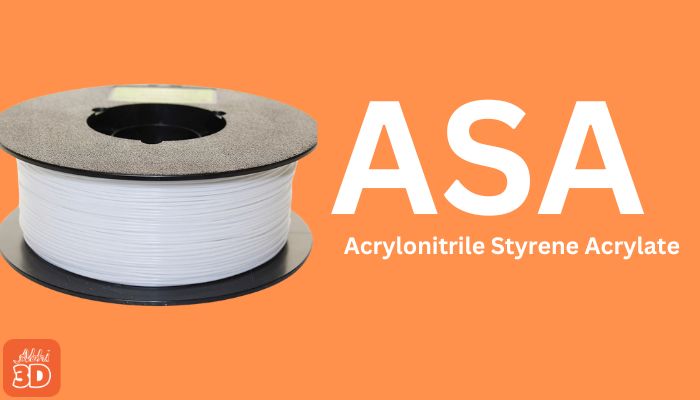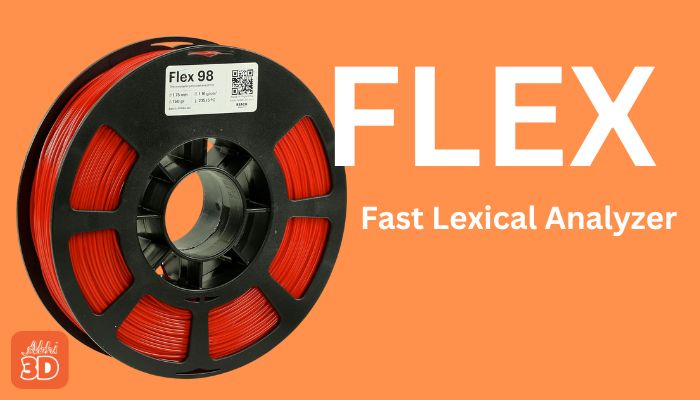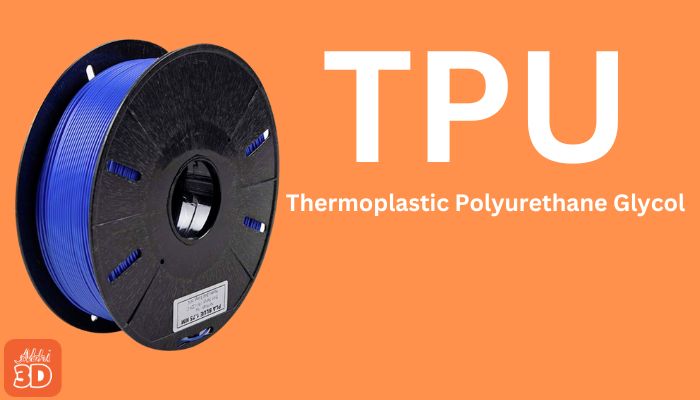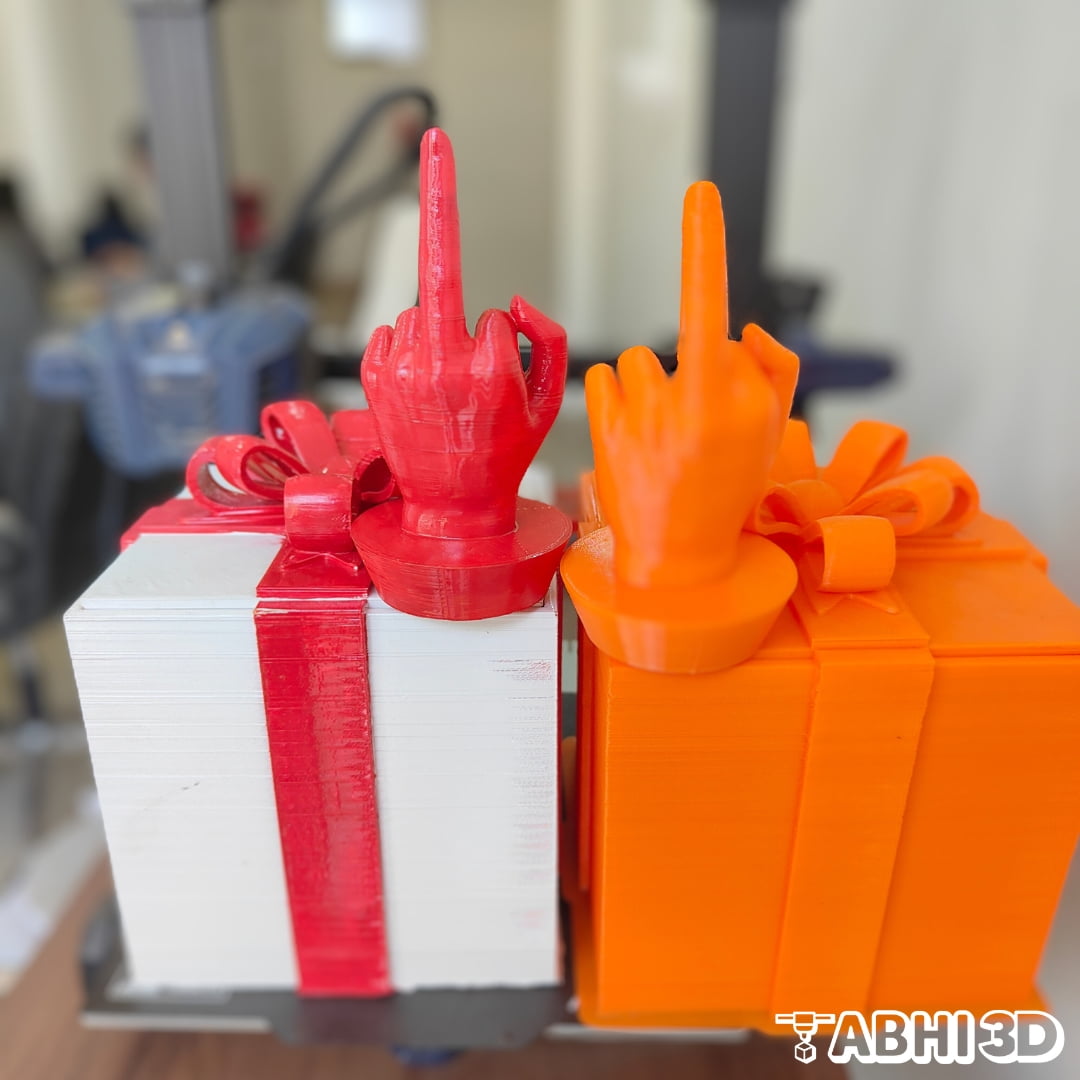3D printing technology which has revolutionised industries from healthcare to aerospace, is as much about the materials used as it is about the 3D printers themselves. Here I am going to talk about 10 popular Filament materials that are used in FDM 3D printer.
It’s important to first understand that the filament is a thread-like material that brings your 3D designs to life, printing it layer by layer.

There are a lot of filament types available in the market, each with its unique properties and applications. From the commonly used PLA and ABS to the more exotic wood-infused or metal-filled filaments, the choices are too many.
But what are all these filaments? How do you know which filament is the perfect fit for your project? Don’t worry, because that’s exactly what we’ll explore.
In the following list, I will explain all the important Filament types and their benefits and negatives of each filament type. We’ll provide you with the knowledge that will help you in choosing the right printing material for an FDM 3D printer.
What is Filament?
Before we share the list let’s first learn a bit more about Filament.
Filament refers to the thermoplastic material that is heated and extruded by the (FDM) printer to create the 3D object. These filaments, typically 1.75mm or 3.00mm in diameter, are supplied on spools and are composed of various types of plastics like PLA, ABS, PETG, or TPU.

Each material offers distinct properties such as durability, flexibility, and temperature resistance, making them suitable for different applications.
During the printing process, the filament is fed through a heated extruder, which melts it and deposits it layer by layer to construct the 3D object.
Proper storage is crucial for these materials as they can absorb moisture from the air, which can affect print quality.
The choice of filament significantly influences the strength, appearance, and functionality of the printed item. So let’s check out popular filaments one by one.
List Of 10 Popular Filament Types In 3D Printing:
There are many types of filament for FDM 3D printer, each offering their different properties. Here are 10 popular types.
1. PLA (Polylactic Acid) Filament
2. ABS (Acrylonitrile Butadiene Styrene) Filament
3. PETG (Polyethylene Terephthalate Glycol) Filament
4. Nylon Filament
5. ASA Filament (Acrylonitrile Styrene Acrylate) Filament
6. Metal Filament
7. Carbon Fiber Filament
8. FLEX Filament
9. HIPS (High Impact Polystyrene) Filament
10. TPU (Thermoplastic Polyurethane) Filament

1. PLA (Polylactic Acid) Filament:
PLA, or Polylactic Acid, is a type of thermoplastic that is derived from renewable resources like corn starch or sugar cane. It’s a favorite among 3D printing enthusiasts, and for good reason. It’s biodegradable, easy to use, and generally more eco-friendly than its petroleum-based counterparts. Plus, it’s available in a wide range of colors and finishes, making it a versatile choice for a variety of projects.

Additionally, PLA tends to warp less than other materials, resulting in higher-quality prints. It’s also odorless when heated, unlike ABS, another common 3D printing material, which can give off a strong, unpleasant smell. Don’t worry, I will cover ABS in next point.
Being biodegradable makes PLA not as durable as some other materials. It’s more brittle, and it degrades over time, especially when exposed to heat or sunlight. This makes it less suitable for items that need to withstand heavy use or harsh conditions. However, for many hobbyists and professionals, the benefits of PLA far outweigh these drawbacks making it the most popular filament.
You can read our PLA filament guide here and PLA+ here
2. ABS (Acrylonitrile Butadiene Styrene) Filament:
If you are looking for durability, strength, and high-temperature resistance in your 3D prints then ABS will be your go-to material. It’s well known for creating sturdy and robust parts that can withstand high stress and strain.

However, It can be a bit tricky to work with ABS, especially for beginners, due to its tendency to warp during the cooling process.
Now, let’s talk about the unique characteristics of ABS that make it a standout when compared to PLA. It has a high glass transition temperature, which means it can withstand higher temperatures before it begins to deform. This makes it a great choice for your 3D objects that will be exposed to high heat or sunlight.
Additionally, ABS is soluble in Acetone, allowing for post-processing by ‘smoothing’ – a technique that can give your prints a glossy finish.
On the negative side, ABS produces fumes during printing, so it’s essential to ensure proper ventilation in your printing area.
You can read our detailed guide on ABS filament here.
3. PETG (Polyethylene Terephthalate Glycol) Filament:
It’s a transparent thermoplastic that’s gaining popularity due to its fantastic properties. It’s as easy to use as PLA, but it offers the strength of ABS, making it an ideal choice for a wide range of applications. PETG is also highly durable and resistant to moisture and UV light, which means your 3D-printed objects will stand the test of time and the elements.

Now, let’s talk about the printability of PETG. It’s a dream to work with! PETG filament has excellent layer adhesion and produces prints with a glossy finish. It’s less prone to warping or shrinking compared to other materials, which means fewer failed prints. And guess what? It’s also odorless during printing! However, it’s worth noting that PETG prints at a higher temperature than PLA, typically around 230-250°C. So, you’ll need a 3D printer that can handle these temperatures.
But wait, there’s more! PETG isn’t just about practicality; it’s also about sustainability. PETG is recyclable, making it an eco-friendly choice in the world of 3D printing. It’s also food safe, although it’s always recommended to use a separate printer for food-related items to avoid cross-contamination. So, whether you’re a hobbyist or a professional, PETG filament offers a combination of ease of use, durability, and environmental friendliness that’s hard to beat.
You can read our detailed guide on PETG filament here
4. Nylon Filament:
In your 3D prints if you are creating parts that need to withstand wear and tear, such as gears, functional prototypes, or even end-use parts. Nylon filament will be a great choice.

It’s a filament that is known for its high strength-to-weight ratio, low friction coefficient, and excellent thermal and chemical resistance. It’s also highly versatile, with the ability to be dyed in various colors post-printing, giving designers and creators a wider range of customisation options.
However, it’s worth noting that Nylon can be a bit tricky to print with due to its high shrinkage rate and tendency to absorb moisture from the air.
With the right settings and a bit of patience, you can achieve good results with Nylon filament. It’s recommended to use a heated print bed and enclosed print chamber to minimise warping and to store the filament in a dry, cool place to prevent moisture absorption.
5. ASA Filament:
One of the key reasons why people use ASA filament is its durability. It’s incredibly tough and can withstand high temperatures, making it perfect for parts that need to endure harsh conditions. Plus, it has excellent color retention, so your prints will stay vibrant even when exposed to sunlight.

If we talk about its characteristics, it’s thermoplastic filament has exceptional resistance to weather, UV light, and heat, making it a good choice for outdoor applications.
Now comparing to more popular like PLA, ASA filament, ASA filament is toughest. It’s due to its superior impact energy absorption.
You can read our full guide on ASA filament here
6. Metal Filament:
Metal filaments are usually costly but they provide one of the best durability and flexibility in 3D prints. It’s a composite material, typically consisting of around 80% metal and 20% PLA or ABS. This composition allows for the creation of objects that have the weight and feel of pure metal, but with the ease of printing associated with PLA or ABS.

However, it’s worth noting that printing with metal filament requires a well-tuned printer and a hardened nozzle to withstand the abrasive nature of the material.
Lastly, while Metal Filament offers numerous advantages, it’s not without its challenges. The material’s high density can lead to increased wear and tear on your printer. Additionally, post-processing techniques such as sanding and polishing are often necessary to achieve the desired finish.
7. Carbon Fiber:
Carbon Fiber Filament is made up of two parts: a standard plastic (like ABS or PLA) and tiny, chopped-up strands of carbon fiber. As a result, filament is not only strong but also lightweight.

One of the key benefits of Carbon Fiber is its strength-to-weight ratio. It’s five times stronger than steel, yet weighs two-thirds less. This makes it an ideal material for applications where strength and weight are critical factors, such as aerospace, automotive, and even in the creation of prosthetics.
It’s important to note, if you are new 3D printing and decided to use Carbon Fiber Filament you might feel it’s abrasive to work with. It has tiny carbon fibers can wear down a standard brass nozzle, so you’ll need a hardened steel or a ruby nozzle to print with it.
It’s also more brittle than standard filaments, which means it can snap if you’re not careful. And let’s not forget about the price. Carbon Fiber Filament is more expensive than your standard PLA or ABS.
So, should you use Carbon Fiber Filament? Well, that depends on your needs. If you’re looking for strength and lightness, and you’re willing to invest in the right equipment, then yes, it’s a fantastic choice. But if you’re a beginner or you’re on a tight budget, you might want to stick with more traditional materials.
8. FLEX Filament:
As the name suggest FLEX filament is a type of flexible filament made from a class of thermoplastic elastomers. This filament type is known for its elasticity and ability to withstand bending and flexing without breaking, similar to rubber.

This filament can stretch up to twice its original length before it reaches its breaking point. Making it the perfect printing material for those objects that need to be flexible or have a rubber-like texture, such as phone cases, shoes, or wearable items.
Another notable feature of FLEX filament is its excellent layer adhesion. Unlike some other 3D printing materials, FLEX filament doesn’t have a tendency to warp or shrink during the printing process. This means you can create complex, intricate designs with a high level of precision and consistency.
On the negative side, printing with FLEX filament can be challenging due to its flexibility and it often requires a printer with a direct drive extruder. It requires a well-tuned 3D printer and a bit of patience to get the settings just right.
9. HIPS (High Impact Polystyrene) Filament:
High Impact Polystyrene is a thermoplastic that is similar to ABS but has a few unique properties that set it apart.

Firstly, HIPS is soluble in Limonene, a common citrus-based solvent. This makes it an excellent support material for complex 3D prints. Once the print is complete, the HIPS support can be dissolved away, leaving a clean, high-quality print.
Secondly, HIPS is known for its impact resistance, hence the name. It’s a tough material that can withstand a lot of wear and tear, making it ideal for parts that need to be durable.
Lastly, also remember, that HIPS does have a few drawbacks. It requires a heated print bed, and it can be a bit tricky to print with if you’re not familiar with it. It also has a higher printing temperature than some other materials, which can be a challenge for some printers.
10. TPU (Thermoplastic Polyurethane) Filament:
Unlike rigid materials like PLA or ABS, TPU can bend, stretch, and flex without breaking. This makes it perfect for printing objects that need to withstand a lot of wear and tear, like phone cases, shoes, or even car parts.

Another great feature of TPU is its durability. It’s resistant to abrasion, oil, and grease, which means it can handle tough conditions without degrading.
Next, it’s waterproof, so you can use it for outdoor applications without worrying about it getting damaged by the elements.
But that’s not all. TPU also has excellent layer adhesion, which means it sticks to itself very well during the printing process. This results in prints with a smooth, high-quality finish, and reduces the risk of print failures.
However, TPU can be a bit tricky to print with, especially for beginners. It requires a slower print speed and a heated print bed to prevent warping. But with a bit of practice and patience, you can achieve amazing results with this material.
Conclusion:
In the end, the various types of filament, including ABS, PLA, PETG, Nylon, and TPU, each have their unique properties and applications.
PLA is the most popular because it’s easy to use, provides decent strength and durability. Plus, it’s eco-friendly.
ABS is known for its strength and durability, making it suitable for creating sturdy objects.
PETG combines the benefits of both ABS and PLA, offering durability and ease of use.
On the other hand, TPU and FLEX are known for their flexibility and resistance to abrasion, making them perfect for creating flexible parts.
HIPS and PVA are often used as support materials due to their solubility, while Wood, Metal, and Carbon Fiber filaments offer unique aesthetic and mechanical properties that can bring a new dimension to 3D printed objects.
However, each filament type requires different printing conditions and has its own set of challenges. Therefore, the choice of filament largely depends on the specific requirements of the project at hand.
If you are a beginner start with PLA filament and then move to other filaments based on your 3D objects requirement.
Let us know in the comments below which filament material you frequently use and why.







